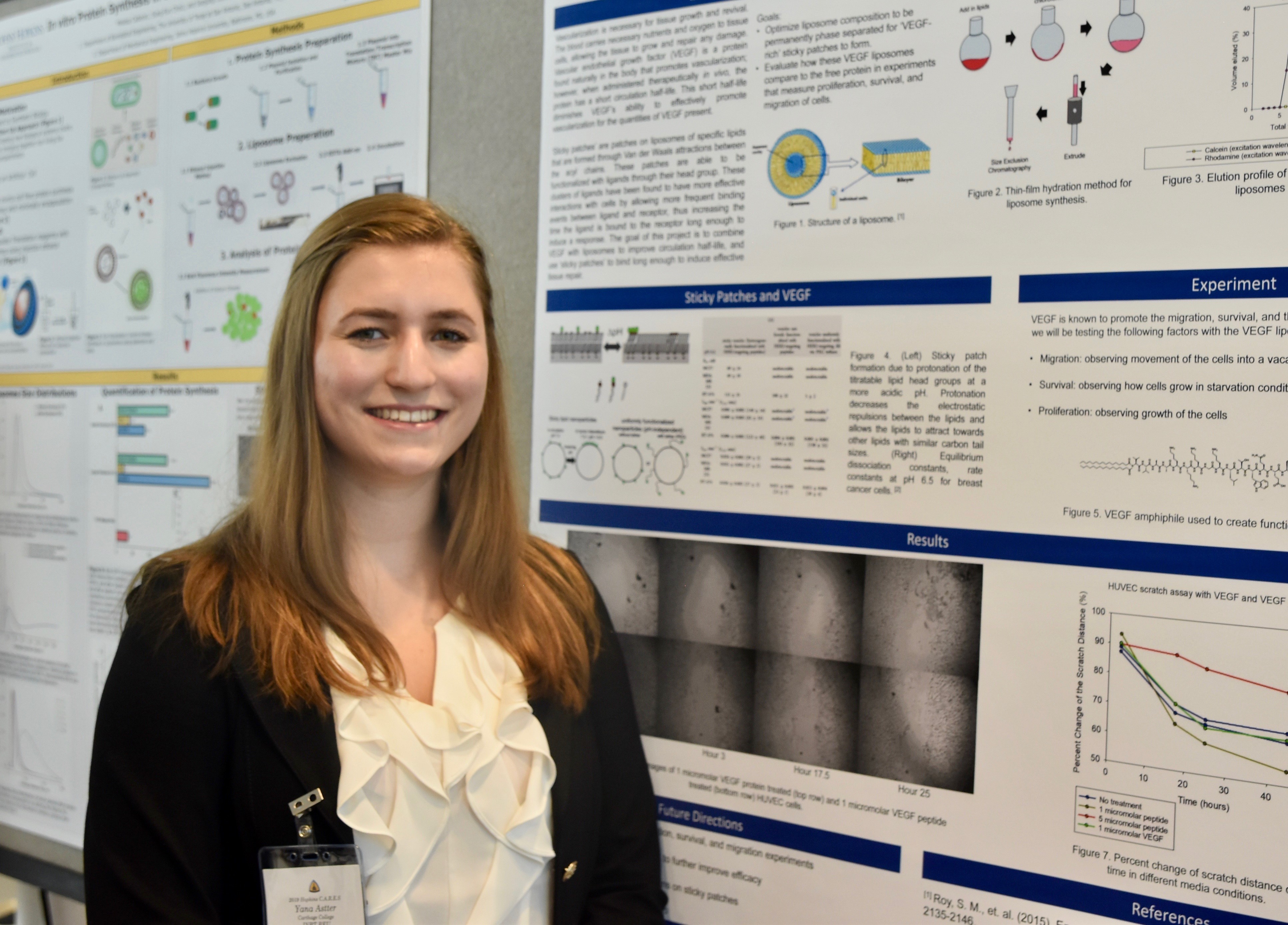Celebration of Scholars
Impact of deposition conditions on the quality of silica nanoparticle crystalline structures
 Name:
Yana Astter
Name:
Yana Astter
Major: Chemistry and Biology
Hometown: Johnsburg, IL
Faculty Sponsor:
John Kirk
Other Sponsors:
Type of research: Independent research
 Name:
Kerigann Ballard
Name:
Kerigann Ballard
Major: Chemistry
Hometown: Pleasant Prairie, WI
Faculty Sponsor:
John Kirk
Other Sponsors:
Type of research: Independent research
 Name:
Grace Tews
Name:
Grace Tews
Major: Chemistry and Neuroscience
Hometown: Freeport, IL
Faculty Sponsor:
John Kirk
Other Sponsors:
Type of research: Independent research
Abstract
Nanotechnology is applicable to a wide range of fields, including environmental monitoring, medical diagnostics, and compound identification. This research works to develop a sensor structure composed of silica nanoparticles for detecting organic compounds in water. These silica nanoparticle crystals can also be used in photonics, separations, and filtration.
Silica nanoparticle crystalline structures can be formed through spin-coating. The quality of silica nanoparticle depositions using this method relies on several factors, including cleaning the substrate, spin-coating speed and time, sonication method, and pH. An optimized deposition technique should result in silica nanoparticle crystalline structures with few irregularities. This work investigated two factors to improve the depositions: the method for cleaning the substrate, and the method for suspending the nanoparticles in solution. Qualitative and quantitative analysis indicated that probe sonication yields the highest quality slides. Other quality factors, such as spin coater parameters and rest/dry time, were kept constant with the optimal conditions found previously. The crystals deposited through this method are a new development and we are quantitatively assessing the parameters for deposition. Although observation through instrumentation is ideal, a visual analysis helps determine irregularities across the glass substrate. Using ImageJ, we measured the uniformity of the silica nanoparticle depositions quantitatively. Overall, this work presents the impact of cleaning method and sonication on depositions, as well as our quantitative analysis of these depositions using ImageJ.
